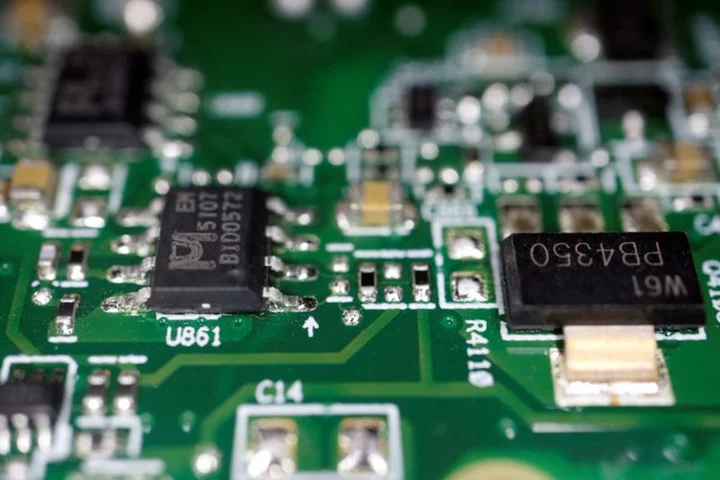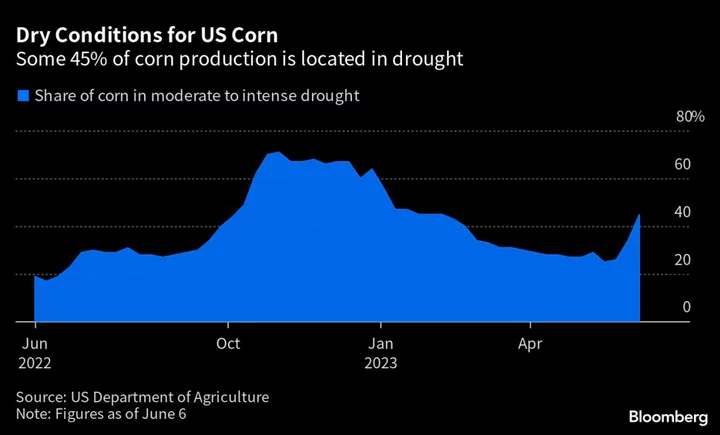
What is Threads? All your questions about Meta's new Twitter rival, answered.
Threads, Meta’s text-based app seemingly built to rival Twitter, is live
2023-07-07 01:23

Larry Fink Leads CEOs Back to COP Talks They Snubbed Last Year
Wall Street is returning to climate talks that it largely snubbed last year, as the United Arab Emirates
2023-10-19 19:54

What happened between xQc and Pokimane? Pro streamers' feud over Kick explored
xQc and Pokimane's feud over the Kick deal sparked controversy with conflicting views on the platform's impact
2023-07-09 19:19

New Orleans facial recognition tool mostly used against Black suspects
After the New Orleans City Council voted to allow the use of facial recognition software to identify criminals more readily and accurately, reports indicate that the technology was ineffective and erroneous. This system went into effect in the summer of 2022, and Politico obtained records of the year’s worth of results. The outlet found that not only was the facial recognition tool vastly incapable of identifying suspects, but it was also disproportionately used on Black people. And from October 2022 to August 2023, almost every facial recognition request regarded a Black suspect. Politico reported that in total, the department made 19 requests. However, two of them were thrown out because police had identified the suspect before the system’s results came back, while two others were rejected because the program’s application didn’t extend to those crimes. So, of the 15 requests made by the New Orleans Police Department, 14 concerned Black suspects, the outlet wrote. On top of this, only six of these requests turned up with matches — and half of those were erroneous — while the remaining nine did not pull up a match. Facial recognition technology has long been controversial. The city of New Orleans previously had banned the use of facial recognition software, which went into effect in 2020 following the death of George Floyd. Then, in 2022, the city reversed course, allowing it to be used. In the wake of the reversal, the ACLU of Louisiana Advocacy Director Chris Kaiser called the new ordinance “deeply flawed.” He not only pointed out research that indicated that “racial and gender bias” affected the program’s accuracy but also highlighted privacy concerns around the data that the program relies on when identifying potential suspects. A previous investigation by The Independent revealed that at least six people around the US have been falsely arrested using facial ID technology; all of them are Black. One such arrest occurred in Louisiana, where the use of facial recognition technology led to the wrongful arrest of a Georgia man for a string of purse thefts. Regardless of the false arrests, at least half of federal law enforcement agencies with officers and a quarter of state and local agencies are using it. At least one council member acknowledged the shortcomings of this technology. “This department hung their hat on this,” New Orleans Councilmember At-Large JP Morrell told Politico. Mr Morrell voted against using facial recognition last year. After seeing the police department’s data and usage, he said the tool is “wholly ineffective and pretty obviously racist.” “The data has pretty much proven that advocates were mostly correct,” Mr Morell continued. “It’s primarily targeted towards African Americans and it doesn’t actually lead to many, if any, arrests.” City councillor Eugene Green, who introduced the measure to lift the ban, holds a different view. He told Politico that he still supports the agency’s use of facial recognition. “If we have it for 10 years and it only solves one crime, but there’s no abuse, then that’s a victory for the citizens of New Orleans.” It is important to note that despite hiccups with the system’s results, the agency’s use has led to any known false arrests. “We needed to have significant accountability on this controversial technology,” council member Helena Moreno, who co-authored the initial ban, told the outlet. New Orleans has a system in place in which the police department is required to provide details of how the tool was used to the City Council on a monthly basis; although Politico disclosed that the department agreed with the council that it could share the data quarterly. When asking about the potential flaws with the facial recognition tool, as outlined by Politico’s reporting, a New Orleans Police Department spokesperson told The Independent that “race and ethnicity are not a determining factor for which images and crimes are suitable for Facial Recognition review. However, a description of the perpetrator, including race, is a logical part of any search for a suspect and is always a criterion in any investigation.” The department spokesperson also emphasised that its investigators do not rely solely on facial recognition, “but it is one of multiple tools that can be used to aid in investigations,” like evidence and/or forensics, adding that officers are trained to conduct “bias-free investigations.” “The lack of arrests in which Facial Recognition Technology was used as a tool, is evidence that NOPD investigators are being thorough in their investigations,” the statement concluded. Read More Cousins may have Achilles tendon injury; Stafford, Pickett, Taylor also hurt on rough day for QBs Four tracts of federal waters in the Gulf of Mexico are designated for wind power development A salty problem for people near the mouth of the Mississippi is a wakeup call for New Orleans Gulf oil lease sale postponed by court amid litigation over endangered whale protections What is super fog? The mix of smoke and dense fog caused a deadly pileup in Louisiana What is super fog? Weather phenomenon causes fatal Louisiana pile-up
2023-11-01 06:49

Amazon Echo Buds (2023) Review
The $49.99 Amazon Echo Buds (2023) differ from the $119.99 2nd-Gen Echo Buds (which are
2023-06-10 05:59

Factbox-Japan ramps up efforts to strengthen its chip industry
TOKYO Semiconductor materials maker JSR Corp's board will meet on Monday to discuss a potential multi-billion dollar buyout
2023-06-26 16:55

'Clone' or competitor? Users and lawyers compare Twitter and Threads
In a cease-and-desist letter earlier this week, Twitter threatened legal action against Instagram parent company Meta over the new text-based app, Threads
2023-07-08 05:56

US Ryder Cup Captain's Picks Announcement Zoom Featured Hilarious Awkward Silence
VIDEO: Awkward silence on Ryder Cup Zoom call.
2023-08-29 23:57

Microsoft agrees to keep Call of Duty on Sony Playstation after it buys Activision Blizzard
Microsoft has signed an agreement with Sony to keep the Call of Duty video game series on PlayStation after the tech giant buys video game maker Activision Blizzard
2023-07-17 01:46

Activision interested in more Crash Bandicoot games
'Crash Team Rumble creative director Dan Neil has claimed Activision is keen to do more games in the franchise.
2023-06-21 20:29

FEELM Shares the Honor With Clients at This Year’s Vapouround Awards, Winning Across Four Categories
LONDON--(BUSINESS WIRE)--May 17, 2023--
2023-05-17 14:25

Five Key Charts to Watch in Global Commodity Markets This Week
Biodiesel fans will be keenly awaiting an announcement this week by the US Environmental Protection Agency on how
2023-06-12 05:29
You Might Like...

Stereophonics’ Kelly Jones on AI: Art should come from people

Have people forgotten how to skip? Yes, according to a viral TikTok challenge

Crypto Exchange Huobi Delists Tokens Using Justin Sun’s Tron Stablecoin

SpinLaunch Hires Leading Aerospace Investment Strategist Matthew Mejía As Chief Financial Officer and Chief Strategy Officer

The Future of AI Is Inside Neos: Assembly Software Launches NeosAI, Revolutionizing the Legal Industry

Apple Vision Pro: 6 things we love and 3 we don't

How to Download MTG Arena: PC, Mobile Devices

iOS 17: New iPhone update could completely change how lock screen works
